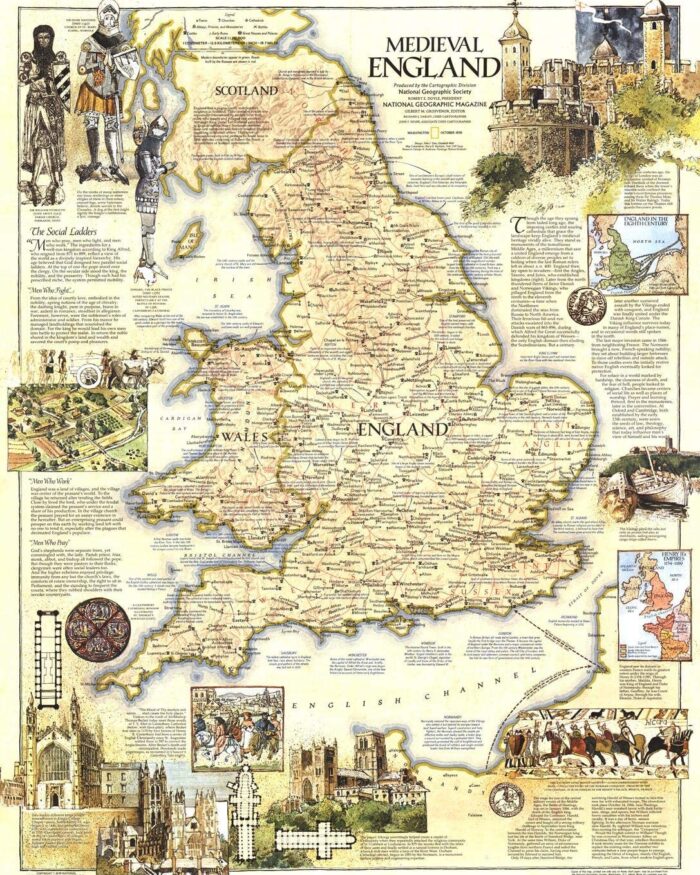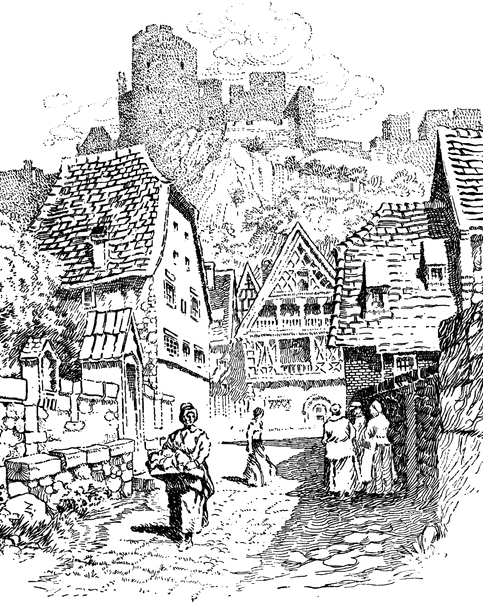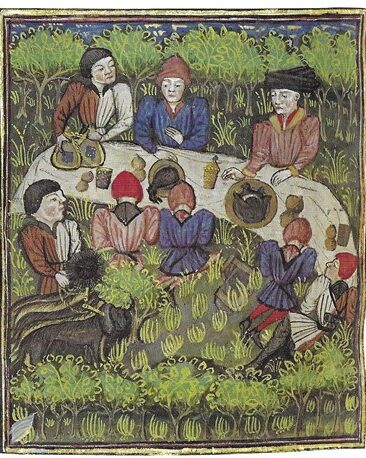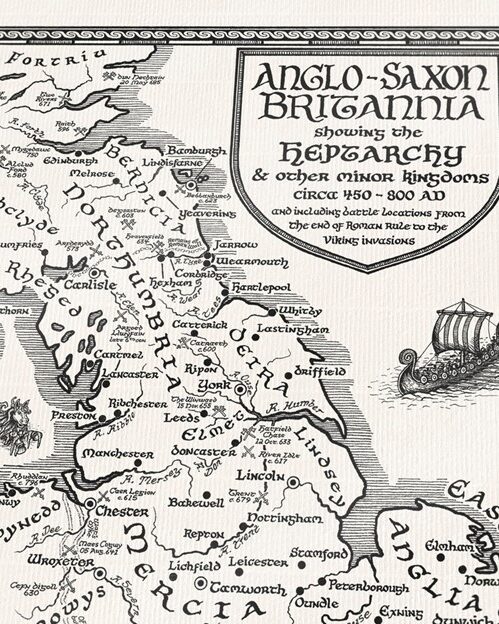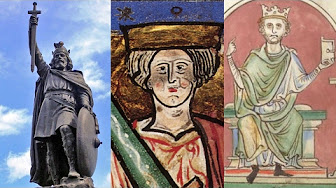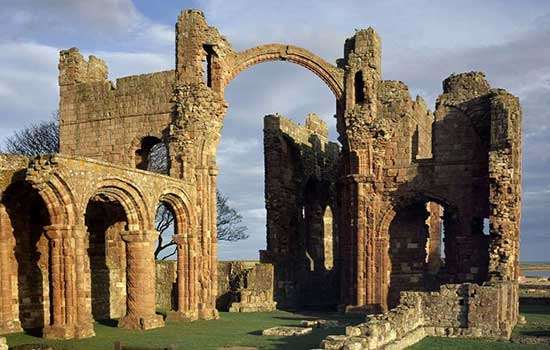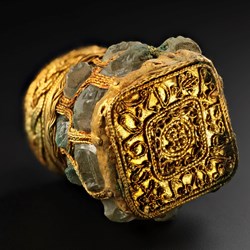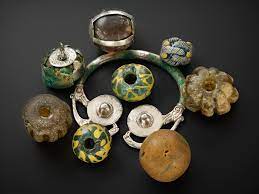Egbert: Wessex Rises to Power
Egbert, also spelled Ecgberht, or Ecgbryht, birth 771/crowned King of Wessex, 802 at age 29; also crowned King of Kent, 825 at age 54/death approximately 839 at age 68/spouse, name unknown
House: Historians do not agree on Ecgbert’s ancestry
Children: Æthelwulf King of Wessex (839-858)
Reign: King of Wessex, 802-839/King of Kent, 825-836

Egbert, King of Wessex (Photo: Print Collector via Getty Images)
Source: Discovery “Who was King Egbert of Wessex and What Did He Do?”
Like Oswiu, Egbert spent part of his youth as an exile, fleeing to Francia when King Beorhtric claimed authority over Wessex. At this time, Francia was a united empire under the rule of Charlemagne (King of the Franks 768-814 CE, Holy Roman Emperor 800-814 CE) who protected the young exile. Egbert remained in exile in Francia until 802 when, according to the Anglo-Saxon Chronicle, he returned to England and fought successfully to gain control of Wessex. It helped that at that same time King Beorhtric died. (Sources are not sure whether it was in battle or by some other means.)
The first 20 or so years of Egbert’s kingship are not well documented although it is thought that he spent most of this time trying to keep Wessex independent from Mercia. This struggle for independence came to a head in 825 when the two sides met at the Battle of Ellandun (also spelled Ellandun). While the exact location of the battle is debated, historical and topographical evidence suggests it took place near Windmill Hill, Lydiard Tregoze, Swindon, or potentially near Wroughton, south of Swindon. Egbert’s forces were victorious and the Mercians (led by King Beornwulf) were forced to retreat to the north.

Source: Medieval History “The Battle of Ellandun: A Tale of Bravery and Victory”
Riding high from his victory, Egbert and his army invaded East Anglia, Essex, Kent, Sussex, and Surrey, all of which were under either direct or indirect Mercian control at the time. In the space of a year, he and his army successfully took control of these kingdoms and the balance of power in Anglo-Saxon England completely shifted. By 826, Wessex was seen as the most powerful kingdom in the country. In 829 and 830, Egbert led the combined armies of his new dominions northward and took control of the Midlands kingdom, Northumbria, and Wales. Historians emphasize that at this time, rather than trying to unify all of Britain, kings were just trying to expand their power and influence. They still viewed kingdoms as separate entities, although entities over which they did strive to rule.

Southern England during Egbert of Wessex’s reign
During Egbert’s reign, the Vikings, Danish, and Norwegian raiders, continued to ravage the shores of Britain and the terrifying attacks grew in strength in the last years of his reign. Coming from Denmark and Norway in their dragon prows, or longships, the Vikings were a warrior culture. One of their most famous raids took place on the holy island of Lindisfarne in 793 where they slaughtered all inhabitants and took all of the riches they found. This Viking raid on the island of Lindisfarne, just off the Northumbrian coast, was not the first in England. “A few years before, in 789, ‘three ships of northmen’ had landed on the coast of Wessex and killed the king’s reeve who had been sent to bring the strangers to the West Saxon court. But the assault on Lindisfarne was different because it attacked the sacred heart of the Northumbrian kingdom, desecrating ‘the very place where the Christian religion began in our nation’. It was where Cuthbert (d. 687) had been bishop, and where his body was now revered as that of a saint.” [Quote from English Heritage] Some historians refer to this event as the beginning of the Viking Age.
Alcuin of York chronicled the attack on Lindisfarne:
Never before has such an atrocity been seen…The church of St Cuthbert is spattered with the blood of the priests of God, stripped of all its furnishings, exposed to the plundering of pagans – a place more sacred than any in Britain. [The Viking Attack at Lindisfarne – The Primary Sources]

The famous Lindisfarne Bible had its cover ripped off during the Viking raid.
According to the Anglo-Saxon Chronical, in 836, a Viking force of thirty-five ships landed on the Somerset coast and their warriors attacked Wessex. Viking ships varied in size, but two well-preserved vessels from the ninth century, the Oseberg Ship and the Gokstad Ship had fifteen and sixteen pairs of oar-holes respectively, indicating thirty and thirty-two rowers each: an invading army of roughly 1,000 individuals. Their clash with Egbert and his army took place at Charmouth (modern-day Carhampton in Somerset). The Anglo-Saxon Chronicle entry for that year states how “a great slaughter was made there and the Danes remained masters of the field” indicating a significant victory for the Viking raiders. [Source: World History Encyclopedia]
What exactly the Vikings did after the Battle of Charmouth is unknown but there is no doubt they remained in the region because, in 838, they and the army of Dumnonia met Egbert and his army at the Battle of Hingston Down. According to the Anglo-Saxon Chronicles, the Viking-Dumnonia forces seem to have declared war on Wessex and taken up a position in present-day Cornwall, daring Egbert to meet them. The entry for 838 CE continues: “When he [Egbert] heard this, he proceeded with his army against them and fought with them at Hengeston where he put to flight both” winning the field and dispersing the enemy. [Source: World History Encyclopedia]

Source: Facebook

The well preserved Oseberg ship from 820 in the Viking Ship Hall in Oslo, Norway
Photo Museum of Cultural History
In 838, King Egbert summoned a great council to Kingston-upon-Thames and made arrangements for his realm after his death. Two of his predecessors. Cædwalla (King of Wessex from 685 to 688) and Ine (also spelled Ini, King of Wessex from 688 to 726) had traveled to Rome at the end of their lives and Egbert hoped to do that as well. Unfortunately, he never got to go on his planned pilgrimage as he died shortly after the council. As he had requested, he was succeeded peacefully by his son Aethelwulf.
King Egbert of Wessex proved a very powerful leader in the early ninth century when his military strength surpassed that of the long-time powerhouse Mercia. He gained control over the long-time Roman Briton holdout Cornwall expanding his realm and influence. It is believed that he also followed leaders before him by creating strong bonds with Europe through agreements and marriage.

